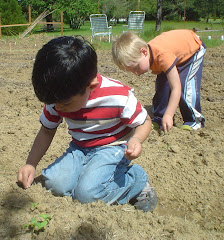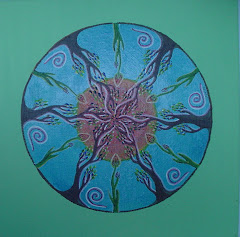October 2019: Here is a timely re-post of an article we wrote
earlier this year about harvesting worm-castings out of our greenhouse
paths. We're proud to announce that for the 2019 season we didn't purchase any
fertilizers and were able to grow close to 8,000 pounds of fruits and
vegetables using locally available resources to feed our worms: leaves
and grass clippings. We supplemented with wood-ash from heating our
house, and coffee-grounds that volunteers bring us from coffee shops.
We're almost done harvesting the worm-compost from our paths this year and it looks like we'll have almost double from last year's harvest. Enjoy!
"Veganic" method for creating soil-fertility: Over the last few years we have become increasingly convinced that moving toward a veganic method of farming makes a whole lot of sense from several perspectives. Veganic agriculture is defined as:
Gathering Materials: Our method of gardening requires massive amounts of "organic matter" (leaves, straw, grass-clippings etc). In the many years since we started the Sharing Gardens (2009) we have developed relationships with the people in, and around our small town encouraging them to bring us these materials instead of burning them or sending them to the land-fill.
A System for Collection: For many years, the
only people who brought us leaves and grass-clippings were those we had
made a personal connection with. In 2017, a teacher from our town's
Grade School approached us about doing a volunteer project with her
students to help the Sharing Gardens. We spent a morning with the
students and raked up over 35 big bags of leaves around town! (LINK: Yes, Money Really Does Grow On Trees!)
In the Fall of 2018, our city-hall contacted us about inserting a
notice in people's water-bills encouraging them to bring their leaves to
our garden. We estimate this yielded another close to 50 bags of
leaves. We imagine that in future years that number will grow as people
hear about the program. LINK: Monroe Leaf Drive
In the flier that was mailed to our town, we included these important guidelines:
Spreading materials:
Since our method of creating soil is cyclic, we could begin at any
point in the process but if you are just getting started, the first step
is to spread the materials. We begin this process at the end of Autumn
as we are dismantling the tomato-cages, pulling up pepper-plants and
weeding the beds in preparation for the following Spring.
Creating worm-compost all season-long: From
Spring through late Summer we continue to add organic-matter as it
becomes available. By watering and walking on the paths we help
the worms and other "micro-livestock" to break down the materials and
turn them into soil.
Sifting and storing worm-compost:
Mixing soil and starting seedlings: In the
past we have been fortunate to have pre-used-soil donated from
two-different nurseries at the end of their growing seasons. Though the
nutrient-content of the soil was mostly depleted, the structure of
the soil was still excellent as it was high in organic-matter, perlite
and other substances to keep the soil light and fluffy. We are careful
to only accept soil-donations from 'organic' growers (no
herbicides/pesticides). Our mix-ratio was 'one-part' worm compost to
'two-parts' depleted soil.
If you don't have access to previously-used soil, there are many recipes on-line for making your own. Typically they include coconut coir (a more-renewable resource than peat-moss) and sand or perlite - so the soil drains well, and compost for fertility. Use the worm-compost outlined in this article in place of the regular compost.
Always mix soil thoroughly so the different materials are evenly mixed and do a few tests with fast-germinating seeds (like radishes) to make sure you have a good mixture.
Update October 2019: This year we have not had any used soil donated and our worm-compost harvest has greatly increased from last year so we will probably be starting our seedlings next Spring in pure worm-compost. Chris has done this before in previous nurseries, with great results. The only reason we didn't do it last year was that we had the pre-used soil donated and we didn't have as much worm-compost.
Pure worm-compost has great drainage due to all the organic-matter within. It's just that it contains more nutrients than young seedlings require so, if you have other material to mix it with, that doesn't cost you anything, it's a good idea to mix it and stretch it out.
Preparing beds: We also use the worm compost to fertilize our raised beds.
Soil fertility is improved by adding wood-ash and coffee grounds: For some reason, worms love coffee
grounds! By sprinkling grounds in your garden beds, you will attract
worms to come into your soil. Coffee grounds also contain many nutrients
on their own so, we also recommend adding them to your greenhouse paths
and compost bins. They will attract worms and speed up the process of
decomposition. (LINK: Coffee and Ashes for Fertility)
The cycle starts again - Spreading materials in paths: Once we have harvested the worm-compost, it's time to start the cycle all over again!
Planting in beds and continuing to add organic-matter to the paths:
"Veganic" method for creating soil-fertility: Over the last few years we have become increasingly convinced that moving toward a veganic method of farming makes a whole lot of sense from several perspectives. Veganic agriculture is defined as:
...an approach to growing plant-foods that encompasses a respect for animals, the environment, and human health. Also known as "stockfree" "vegan organic" and "plant-based," this is a form of agriculture that goes further than organic standards, by eliminating the use of products that are derived from confined animals and by encouraging the presence of wild native animals on the farmland. (LINK: Intro to Veganics)
For
many organic farmers\gardeners, if
not most, fertilizing the soil means adding some type of manure and\or
other animal-based products such as bone meal, fish meal, blood meal,
feather meal, etc. Here at the Sharing Gardens, being vegetarians
ourselves and wanting to grow food in a way that aligns with our values,
we are interested in
developing, and demonstrating ways of growing food that uses local
materials, gathered in a sustainable way with a gentle impact on the
environment.
Here is our current method of building our soil-fertility - right in the paths of our greenhouses!
 |
| "Veganic" agriculture: good for the Earth, good for our health. |
Gathering Materials: Our method of gardening requires massive amounts of "organic matter" (leaves, straw, grass-clippings etc). In the many years since we started the Sharing Gardens (2009) we have developed relationships with the people in, and around our small town encouraging them to bring us these materials instead of burning them or sending them to the land-fill.
 |
| One of our neighbors brings us many trailers full of leaves each Fall. He used to burn them. Now he uses some to mulch his own garden-beds but still has plenty of surplus to share with us. |
 |
| Our land is over three-acres. We have left much of it as grass so that we can harvest this valuable resource. (LINK-Grass Clippings and Leaves for Soil Fertility). When we have surplus from mulching our plants, we spread it in the greenhouse-paths to feed the worms and micro-organisms. |
 |
| Here's the sign we painted and set up along the road in front of our house for the 2018 leaf-drive. |
 |
| We set up this station in our front yard. The trash-can has bundles of leaf-bags for re-use. |
The need for sides on your beds: With this method, it is important that your paths and beds be separated with sides so your soil doesn't mix with the materials in the paths.Please no animal waste, trash or sticks/branches, no holly or roses (too sharp), or black walnut leaves (they can kill plants - LINK). Just leaves and grass 😊.
 |
| Chris has made many of our greenhouse beds with recycled fence-boards held in place with stakes driven into the ground. We have used plywood ripped into four-inch strips too. |
 |
| Here is a greenhouse path that has been "harvested" of its worm-compost. It is ready for new materials to be added. |
 |
| After cleaning all of last season's plant material out of the beds, cutting it into small pieces and laying it in the paths, we cover it with layers of leaves or straw, or whatever we have available. |
 |
| One of our neighbors thatched his lawn and brought all that wonderful grass "hay" for us to use. Here is a college student/volunteer spreading it by the tub-full. |
 |
| Llyn, spreading fresh grass-clippings on top of straw. |
 |
| Here, Chris scoops up the compost with a flat, hand-trowel. We collected fourteen, five-gallon buckets from this one, forty-foot x two-foot path! |
 |
| A flat shovel works well too. |
 |
| This homemade sifter works well to remove large material and give the finished product a uniform texture. The screen is made with "hardware cloth", a wire-mesh with 1/2" holes. |
 |
| After sifting, we often store the worm compost in re-purposed pellet-stove plastic bags. Storing them in this way preserves the material's moisture. |
If you don't have access to previously-used soil, there are many recipes on-line for making your own. Typically they include coconut coir (a more-renewable resource than peat-moss) and sand or perlite - so the soil drains well, and compost for fertility. Use the worm-compost outlined in this article in place of the regular compost.
Always mix soil thoroughly so the different materials are evenly mixed and do a few tests with fast-germinating seeds (like radishes) to make sure you have a good mixture.
Update October 2019: This year we have not had any used soil donated and our worm-compost harvest has greatly increased from last year so we will probably be starting our seedlings next Spring in pure worm-compost. Chris has done this before in previous nurseries, with great results. The only reason we didn't do it last year was that we had the pre-used soil donated and we didn't have as much worm-compost.
Pure worm-compost has great drainage due to all the organic-matter within. It's just that it contains more nutrients than young seedlings require so, if you have other material to mix it with, that doesn't cost you anything, it's a good idea to mix it and stretch it out.
 |
| Seedlings in our home-grown soil, Spring 2019. |
 |
| Chris spreading a layer of worm-compost in greenhouse beds. Note last year's tomatoes and other plant material in pathways (before we've added leaves on top). Excellent worm food! |
 |
| Through the early winter months, we hand-dig these amendments into the soil. This provides a pleasant activity during inclement weather... |
 |
| ...and a nice time for socializing. |
 |
| In early Spring, once we begin mowing the grass again, it makes a nutrient-dense mulch directly on the beds. Worms love fresh grass-clippings and will migrate to beds where it has been added. |
 |
| Tomato-plants systematically being cut-up into the paths. The fallen tomatoes and weeds in the bed to the left of Llyn will also be scooped out/dug up and put into the path to feed the worms. |
 |
| Layer, after layer, we build up the organic-matter in the paths. |
 |
| This includes straw (if we have it) and grass-clippings. |
 |
| The process is an endless cycle, creating soil-fertility from local and veganic materials. |
Harvest!
 |
| This method of growing, yields nutrient-dense, delicious food! |
















































